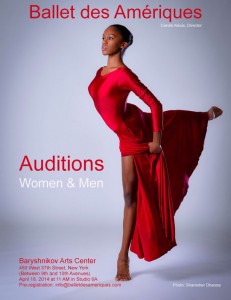
Via The Huffington Post,
2/24/14 by Mark Nerenhausen
Parents across the country are often dumfounded when their child comes to them saying, “I’m going to major in arts leadership.” That declaration is occasionally embraced but more often than not, the response is some version of, “Wouldn’t you rather major in something you can actually get a job doing? Like accounting or finance?” What that concerned parent doesn’t realize is arts leadership provides career opportunities beyond the obvious image of managing a producing or presenting arts nonprofit and extends to fields as diverse as tourism, education, venue management and more.
As the arts have become more successful and as we have seen dramatic growth in the number of nonprofit organizations, we have also seen the role of the arts organization shift. Arts organizations have become more than vehicles to produce art. The arts have an impact on tourism, education, economic development, urban planning and more. With the recognition of those impacts comes a transformation from arts administration to leadership.
This change requires us to understand and act on the role the arts have come to play in the larger civic agenda. It is a change that requires arts leaders to understand what it means to be civic leaders as well as arts leaders and think of the organization’s relationship to that broader agenda, not simply as a means of justifying funding for the organization, but as a fundamental part of the organization’s identity.
The arts have become central to the lives of many people, thanks to the commitment of industry leaders to raise the stature of and drive awareness to the importance art plays in the larger societal conversation. As the opera singer and arts leader Beverly Sills once said, “Art is the signature of civilizations.”
However, if we believe in this linkage and that art is a signature of civilization, we have to be as concerned about the civilization as the art. We have to become engaged in the civic agenda. It is here that opportunity lies. As many of the leading art advocates begin to age and even bow out of the spotlight, it is essential that we train and prepare the next generation to continue the industry’s positive growth trajectory, a trajectory that includes careers in fields that might not always include the word “art” in the job title but very much are based on arts and culture. This includes careers in tourism, the entertainment industry, education, urban planning, sponsorships and marketing, social entrepreneurship, and more.
In order for more students to feel confident in their decision to major in art leadership, we — as educators and leaders need to be able to clearly communicate the degree’s value and prospective career opportunities. We have to understand and convey that arts leadership is more than simply a new metaphor for arts administration.
The differences are more than semantic, and rather speak to a fundamental shift in thinking about the nature of the arts organization. Administration and management is often about what we do, leadership is about who we are. Administration is about the organization and the organization as an end in itself. Leadership speaks to the question of where we are going with the emphasis on “we” and with that perspective comes expanded career opportunity, meaning, and impact.
See the article here




